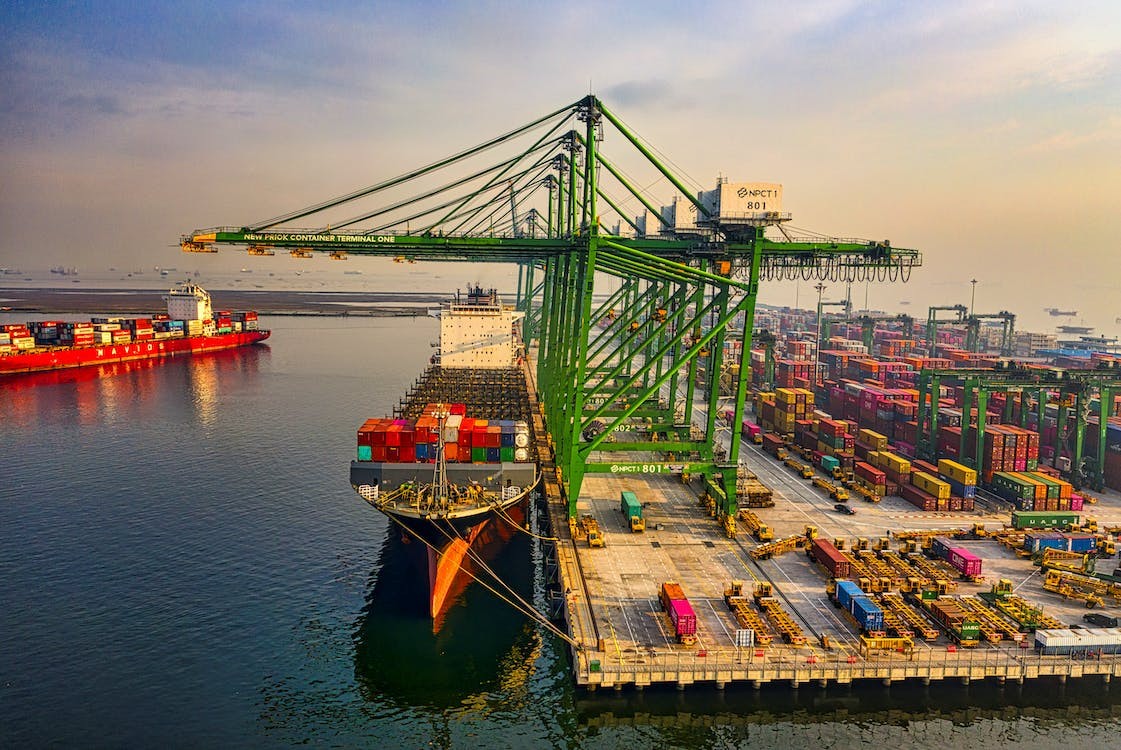
4 Things the Shipping Sector Can Do To Reduce Its Contribution to Climate Change
Maritime transport is the backbone of global trade as it plays a vital role in evenly spreading the benefits of trade and commerce. It is responsible for transporting about 90% of the world’s goods, making it an indispensable industry that drives economic growth worldwide.
While the shipping sector helps advance the world economy, it is also a major contributor to a defining issue of our time: climate change. Recent estimates show international shipping is responsible for around 3% of global GHG emissions annually — an estimate that continues to grow and cause emissions to worsen beyond the 1.5-degree limit stated in the Paris climate agreement.
This issue drove governments, regulatory bodies, and consumers to pressure the shipping industry to adopt strategies aimed at reducing carbon emissions. Here are four things the maritime transport sector can do to minimize its carbon footprint while maintaining its support for the global supply chain.
Switch to Renewable Energy
Among the most evident ways that the shipping sector can minimize its contribution to climate change is by using energy sources that have a lesser impact on the environment. Most shipping vessels use heavy fuel oil (also known as bunker fuel) that has higher sulfur content compared to diesel, making it more harmful to the environment and even to human health.
Maritime transport companies can do away with this energy source and instead switch to cleaner energy like biofuel, which significantly reduces carbon emissions without the need for major modifications to existing ship engines.
Another efficient and cost-effective energy source is always around us: wind. Using ships that run on wind power can significantly reduce carbon emissions and fuel consumption. One drawback of this alternative, though, is that it’s slower compared to vessels that run on bunker fuel.
Impose Strict Carbon Tax Policies
Shipping companies prefer using high-carbon energy sources since they are more affordable and abundant. This reality makes it difficult for them to opt for cleaner fuel even though it’s a more sustainable alternative. One way to resolve this problem is by enforcing a stern carbon tax policy.
Doing so can discourage the industry from using fossil fuels since this measure can drive up the cost of this kind of energy source. On the other hand, the demand for clean energy will rise as it becomes an enticing alternative to high-carbon fuels.
What’s more, adopting a vindictive carbon tax policy can help drive revenue to assist efforts in advancing carbon-free maritime technology. Strict carbon prices can also partially offset operating costs for shipowners who are already using clean fuel and back climate mitigation initiatives worldwide — a result that is vital for countries that feel the effects of climate change the most.
Retrofit Fleets Into Carbon-neutral Vessels
As stated, most shipping vessels sailing today run on bunker fuel because of their primary design. Switching to cleaner energy sources means shipping companies need to either retrofit their vessels to make them suitable for sustainable fuel.
Overhauling shipping vessels to make them more environmentally friendly provides an opportunity for existing and future fleets to be outfitted with cutting-edge technology as it develops. Doing so will also help the sector better prepare for the shift to decarbonized vessels.
Moreover, retrofitting provides the maritime transport industry with the opportunity to meet the latest legislation demands from shipping regulators like the International Maritime Organization (IMO) and European Union Emissions Trading Scheme (EU-ETS).
Both the IMO and EU-ETS are looking to significantly reduce carbon emissions from shipping without compromising the business performance of the shipping sector. Retrofitting vessels can meet both of these goals while also scaling the demand for clean energy.
Develop Battery Technology to Power Ships
Many people are switching to electric cars because of their eco-friendly and fuel-efficient aspects. Improving this technology to fit shipping vessels also poses a significant advantage for the maritime transport sector.
Ships that run on battery power can reduce carbon emissions and energy costs compared to those that operate using bunker fuel. Additionally, batteries can also serve as an immediate backup system to ensure a stable energy supply as vessels perform crucial operations while sailing.
All-electric ships are far from being a reality without any major breakthrough. However, continuous investment in their development will help the industry better understand energy storage and support its move to being a sustainable sector while still backing worldwide economic growth.
Conclusion
Rising sea levels, intense storm surges, and increasing ocean temperature are just some of the many radical effects of climate change — all of which can drastically affect the shipping industry negatively.
These effects can increase operating costs, heighten the risk of damage to vessels and ports, and even decrease the demand for shipping services. That is why the sector must increase its efforts toward reducing its carbon footprint and mitigate its contribution to a worsening climate.
Opting for renewable energy sources, following punitive carbon tax policies, overhauling vessels, and developing new technologies are among the many efforts the industry can adopt to ensure that it meets the imposed climate goals and maintain its role of being the backbone of worldwide economic growth.






